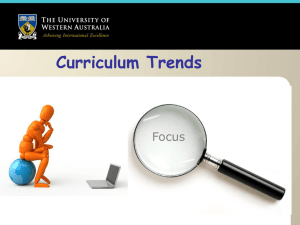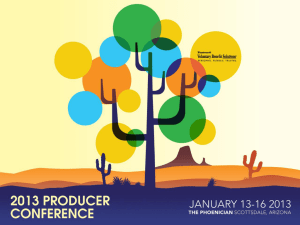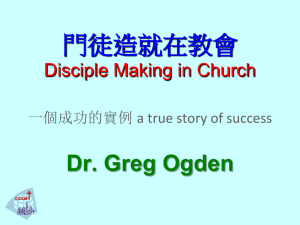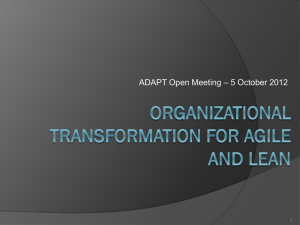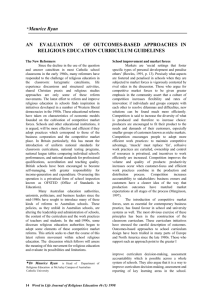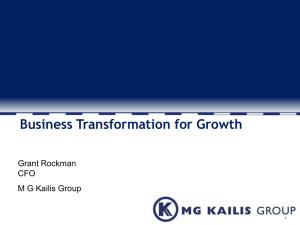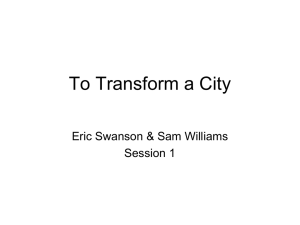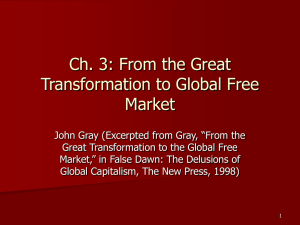Culture of Quality
advertisement
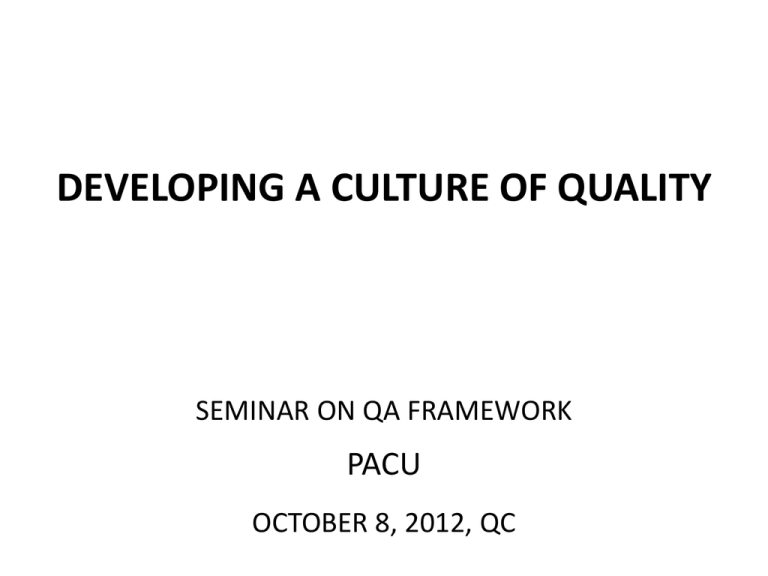
DEVELOPING A CULTURE OF QUALITY SEMINAR ON QA FRAMEWORK PACU OCTOBER 8, 2012, QC Five concepts of quality as applied to higher education: Quality as exceptional, which in turn has three notions • Quality as distinctive (unattainable for most; instinctively known) 1 • Quality as exceeding very high standards (attainable to a limited extent; excellent input and output) • Quality as conformance to standards (use of criteria and ratings; comparability; appear to have absolute standards) Harvey, L., and D. Green (1993). "Defining Quality.", Assessment and Evaluation in Higher Education, 18 (1): 9-34. 2 Quality as perfection or consistency, with zero defects‖(conforms to particular specifications, with emphasis on process and quality culture; everyone is responsible for quality; democratizes but also relativizes excellence) 3 Quality as fitness for purpose, either as the institution‘s mission or as defined purpose by end users (students or employers) 4 Quality as value for money (accountability, performance indicators) 5 Quality as transformation (provider doing something, not for, but to the end user; enhancement, empowerment; equated with the exceptional) Quality is relatively easy to measure in terms of excellence (conformance to standards) and fitness for purpose. The concept of quality as transformation is harder to measure. Quality as transformation means that the participation of students, faculty, and researchers in the education process is enhanced. It means ―giving power to participants to influence their own transformation,‖ with the learner taking ―ownership of the learning process and ... responsibility for determining the style and mode of delivery of learning to some extent. (Harvey and Green, 1993; Harvey and Burrows, 1992; Muller and Funnell, 1992) Harvey, L. and A. Burrows (1992). ―Empowering Students.‖ New Academic, 1(3): 1ff. Assessment of such quality puts a premium on the outcomes of processes. In operational terms, outcomes-based education means ―starting with a clear picture of what is important for students to be able to do, then organizing the curriculum, instruction, and assessment to make sure that this learning ultimately happens. Spady, W. (1994). Outcome-based Education: Critical Issues and Answers. Arlington, VA: American Association of School Administrators. This definition puts students at the center of the education process. Placing students first is a simple design principle, but it has great power.‖ By having learning objectives that derive from desired learning outcomes, there should be more appropriate teaching methodologies and assessments. Kennedy, Donald (1997). Academic Duty. Massachusetts: Harvard University Press. Provider doing something to, not for, the end user. Provider transforms students to personify the desired program outcomes. Students to play a central role in such a transformation. Culture is a way of life shared by a community. Shared attitudes and behavior. (corporate culture (IBM, Google..); culture of excellence; culture of science...) Culture of quality, with quality as transformation of students in an outcomes-based system, is way of life that will make a success of such a system. Shared belief in outcomes-based education and desire for it to succeed leads to change in mind set, attitudes and behavior: • Faculty members: sensitivity to CQI, the art and science of assessment and evaluation, the changing or changed role of the teacher and student in the educational process • Student: sensitivity to their central role in learning • Admin and staff: learned reflex that attaining outcomes is an organizing principle (guidance, extension services, IT, student services...) The Mapua ABET Journey: Non self-conscious cultural development An appreciation of the nature of the school; global standards? Starts out logically. Testing for commitment; a paper chase? Becomes emotional in strong belief. Lining up the material resources; support from the very top; shared belief and attitude Lining up the human resources; support from bottom; start of mass cultural development Self-study on outcomes-based education and accreditation; no paucity of resources for the curious and the motivated; deeper internalization Poring over all the details; applying the knowledge; SSR Empowerment and guidance; enough common understanding; common new language; learning new reflexes Putting a structure; CQIO; organizing it; involving many Running the cycle; interaction over a new matrix; a nascent culture supplanting some old customs (grading system, syllabus-making...) Collectively nervous to death during accreditation visit; shared experience; shared stories; shared history; culture as history, according to Nick Joaquin; history as culture, I say. More theory; more tools and artifacts (software); less clutter; already some detritus left on the road of cultural development Sticking to the knitting; reflexes gone customary Challenges of student-centered learning still a mountain to climb; necessitates some real attitudinal changes on the part of students, faculty and staff; a fraction of a culture thus far; at least not a fractured culture. Culture of outcomes-based education is a culture of quality! Thanks!
